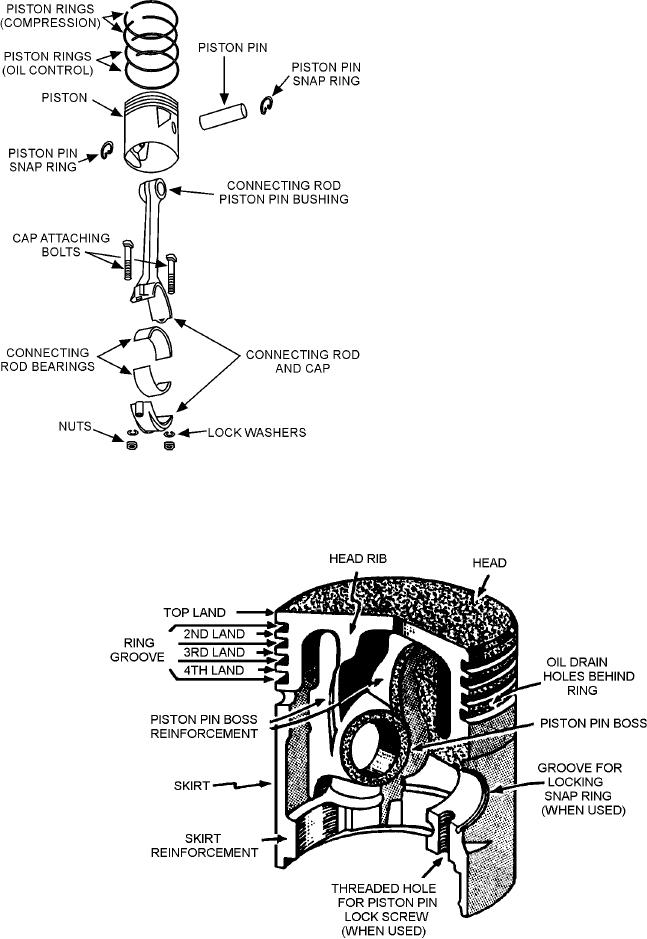
carrier for the piston rings used to seal the compression
in the cylinder. (See fig. 3-25.) Some pistons are
designed to cause turbulence in the cylinder in order to
mix the air and fuel more efficiently.
The piston must come to a complete stop at the end
of each stroke before reversing its course in the
cylinder. To withstand this rugged treatment and wear,
it must be made of tough material, yet be light in
weight. To overcome inertia and momentum at high
speeds, it must be carefully balanced and weighed. All
the pistons used in any one engine must be of similar
weight to avoid excessive vibration.
Pistons are made of gray cast iron or of aluminum
alloy. The former is the heavier and is often used in
slower, heavy-duty engines; the latter is of lighter
weight and is more adaptable to the modern, high-speed
engine. To reduce weight, the head and skirt of the
piston are made as thin as is consistent with the strength
required. Ribs are an integral part of the piston, and
they reinforce the head. The ribs also assist in
conducting heat from the head of the piston to the
piston rings and out through the cylinder walls.
The structural components of the piston are the
head, skirt, ring grooves, and lands (fig. 3-26).
ASf03025
However, all pistons do not look like the typical one
illustrated here. Some have differently shaped heads.
Diesel engine pistons usually have more ring grooves
Figure 3-25.--Piston and connecting rod (exploded view).
ASf03026
Figure 3-26.--The parts of a piston.
3-23

